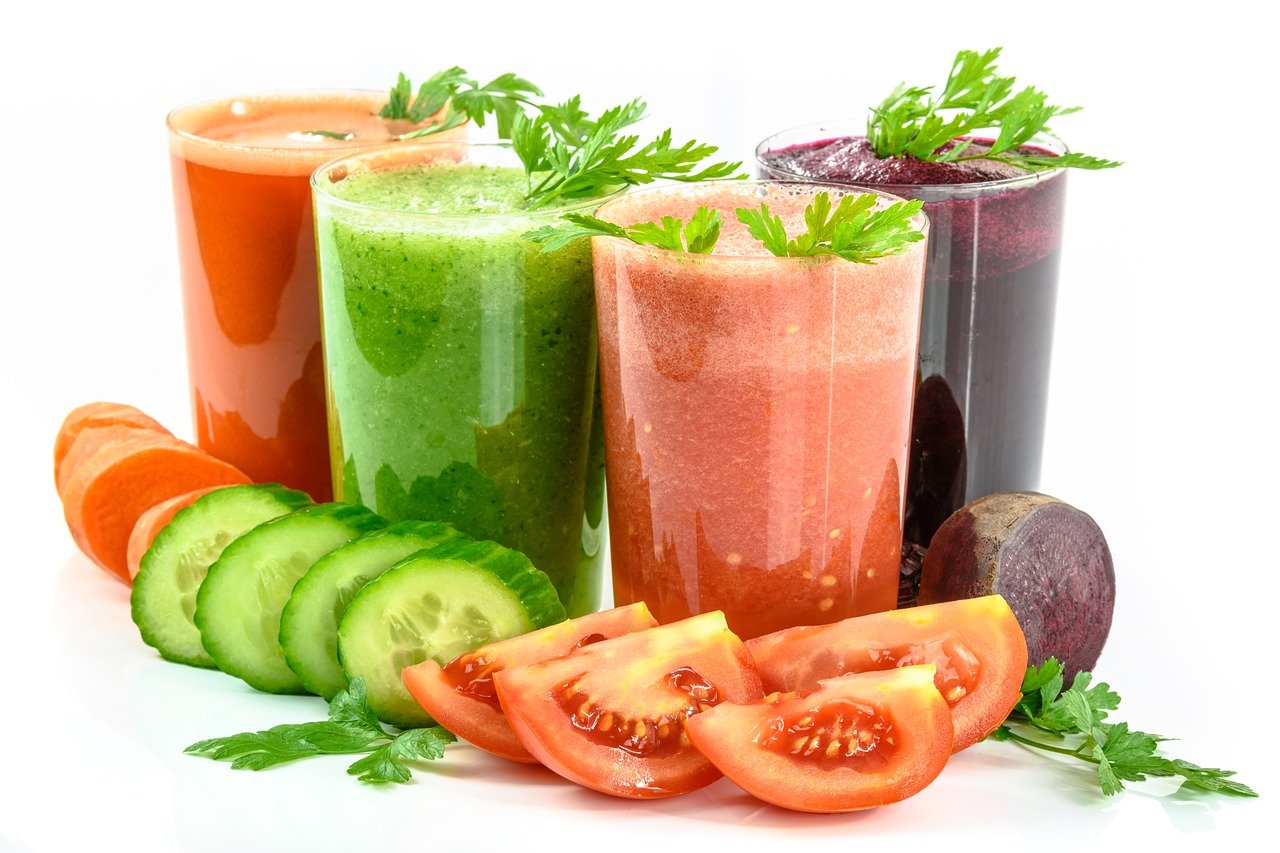Juicing is a healthy practice that has allowed millions of people to boost their nutrition. Juicing fruits and vegetables provides you important antioxidants, which scavenge for oxygen free
radicals that can damage cellular structures, including DNA. When DNA is damaged, it can result in mutations that lead to cancer.
Well-balanced nutrition from a variety of healthy whole foods
helps support and maintain ongoing good health and experts
agree that nutrition plays a key role in preventing chronic and
terminal illness.
Juicing is practiced by millions around the world and it is an easy and convenient way to get plant nutrition into the body to do its magic.
There are several raw vegetables that are especially recommended for reducing risks for various types of cancer. Many also utilize these vegetables as support in fighting cancer once a diagnosis has been made.
Furthermore, scientific research has found promising results in certain vegetables playing a key role in cancer prevention.
Cruciferous Vegetables
Cruciferous vegetables are part of the Brassica genus plant family. These vegetables are rich in key nutrients, including carotenoids, such as lutein, beta-carotene, and zeaxanthin. They are also rich sources of key vitamins, including vitamins C, E, and K along with folate and minerals.
Moreover, these gems of nature provide a group of substances known as glucosinolates, which are chemicals that contain sulfur. It is the sulfur that gives some of these vegetables their bitter
flavor, like that in greens.
According to the National Cancer Institute, animal studies and lab-grown cell experiments have identified numerous potential ways in which glucosinolates can help in preventing cancer:
Protect cells from DNA damage
Ability to inactivate carcinogens
Hold antiviral, anti-inflammatory, and antibacterial properties
Induce apoptosis or cell death
Hinder tumor blood vessel formation and migration, which is required for metastasis
The following section details some of the cruciferous vegetables that are best for juicing.
Cabbage
Another member of the cruciferous family of vegetables that provides powerful antioxidants including, vitamins A and C and the phytonutrients, zeaxanthin, isothiocyanates, thiocyanates,
lutein, and sulforaphane that stimulate detoxifying enzymes, fight oxidative stress, and may offer protection from prostate, colon, and even breast cancers.
In addition, sulforaphane selectively targets cancer stem cells that may prevent cancer from spreading or even recurring.
Cabbage juice is probably not the tastiest on its own but can be added to delicious cancer-fighting blends that include, kale, green apples, berries, and beets.
Kale
According to the National Cancer Institute, kale is yet another valuable cruciferous vegetable that has promise in helping humans will the battle against cancer.
Kale is rich in important nutrients, such as lutein, zeaxanthin, vitamins C, E, and K; folate; and minerals. Kale also contains glucosinolates or sulfur-containing chemicals. While the folate
found in kale does not have a direct impact on cancer treatment, it does help to reduce the risk of complications from cancer and its treatment by lowering risks for heart disease.
Kale and beets are rich sources of potassium, which is an electrolyte that helps regulate fluid in the body, move nutrients into the cells, and remove waste from cells, and supports the
communication between nerves and muscles. While potassium does not have a direct effect on preventing cancer, it may be beneficial
depending upon medications that are prescribed during cancer treatment and side effects that result from treatment, ask your
doctor.
While human studies have shown mixed results, it is 100% safe to say that kale is a nutrient-rich plant food that is 100% recommended as part of a daily balanced diet, and should the cancer-fighting promise materialize that is just icing on the cake.
Kale juices are great and blend wonderfully with many different nutritious fruits and vegetables. It may be an acquired taste for some, but adding lemon or lime juice, and a green apple to kale makes it very tasty.
Carrots
Carrots contain natural compounds, poly-acetylenes that are
only found in carrots and ginseng and that protect the plant from
pests and disease.
Various tests have shown poly-acetylenes to fight inflammation
and cancer and reduce cancer growth in rats. Carrots also
contain beta-carotene, alpha-carotene, vitamin E, and other
cancer-fighting nutrients.
Carrots are higher in sugar than green vegetables, so watch your
juicing intake. Carrot juice blends greatly with kale, cabbage, and green apples.
Purple Grapes
Both grapes and juice of grapes including the skin are excellent sources of resveratrol, which is a phytochemical from a group of
phytochemicals known as polyphenols.
Numerous studies have suggested that polyphenols and especially resveratrol is a powerful antioxidant that in lab studies has
prevented particular damage known to trigger the cancer process in tissues, cells, and animal models.
How To Use In Juicing
Make sure to juice the whole grape, as the skin holds much of the resveratrol. Blend with vegetables for a powerful healthy juice.
Tomatoes
One of the best dietary sources of lycopene, a carotenoid that
plays a key role in cancer prevention and was found to stop
endometrial cancer (causes almost 8,000 deaths each year) cell
growth in a study in Nutrition and Cancer.
How To Use In Juicing
Juice your own tomatoes for a refreshing, healthy, and tangy juice
treat! Add garlic to tomato juice, it is a fantastic combination.
Click Here to learn more about 10 ways to fight off cancer
Disclaimer: Our website services, content, and products are for informational purposes only. Infofool or affiliates does not offer personal health, medical advice, diagnosis, or treatment.
You should always consult your healthcare provider before starting any diet, fitness, exercise, medical, wellness, or nutrition program. If you’re facing a medical emergency, call your local emergency services immediately, or visit the nearest urgent care center or emergency room.


